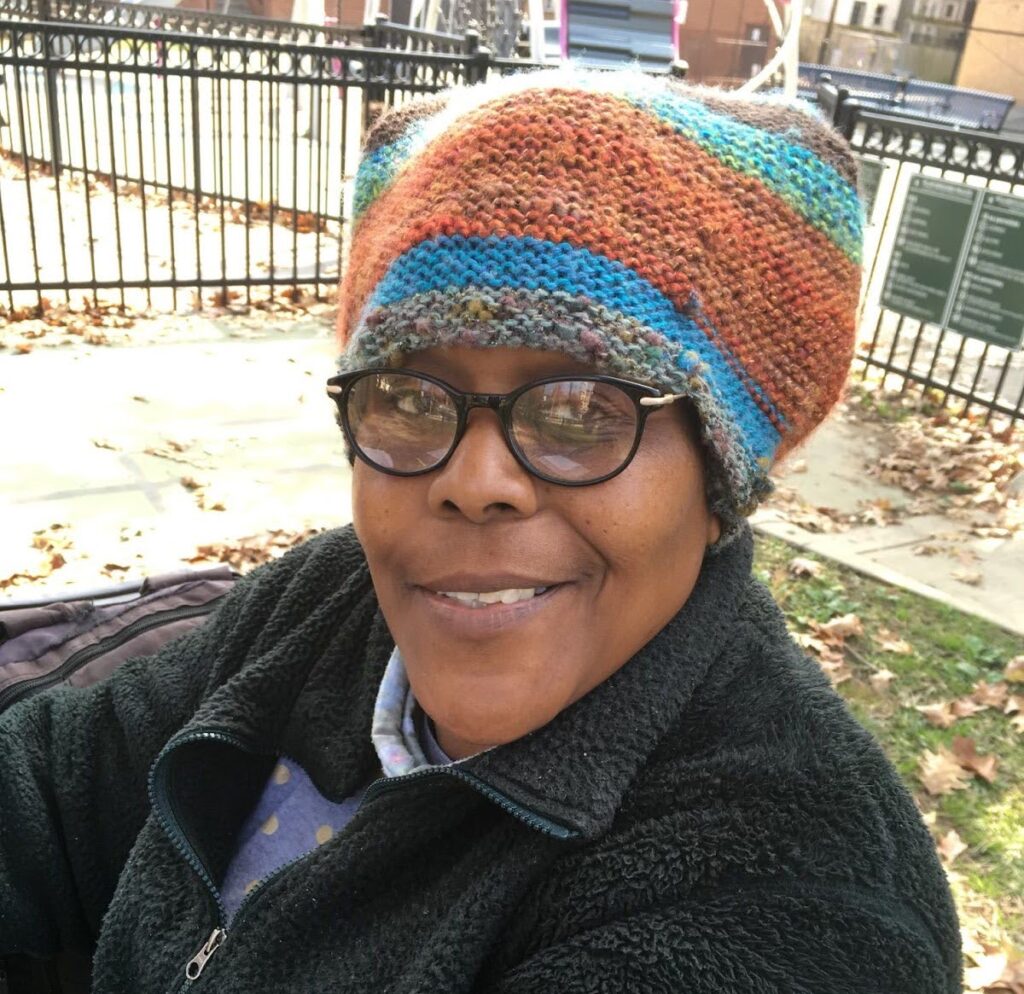With the 20th anniversary of Street Sense Media coming to a close, it seemed like the perfect time to dig deeper into the true story “The stranger who saved my life.”
The short story is in a chapter in Lisa Blackburn Ullven’s book. When Ullven was 18 years old, a man experiencing homelessness saved her life. She learned he was just one of a group of men and at least one woman who slept near her college campus and worked together to keep students safe. The experience led her to rethink her view of homelessness, and ultimately, to feature the story in her book as a testament to the power that one individual can have.
To get the behind-the-scenes view, I headed to Florida to interview Ullven, CEO of Guided Results, and author of “Secrets to Sustainable Solutions – Tips From Business, Science & Non- Profit Experts.”
This interview has been edited for length and clarity.
Can you read a paragraph from the book that captures the story?
“No cars, no people — I could almost hear my heart beating. Then I took a step forward and looked to the right. In between two buildings, I saw five men dressed in all dark clothing. As one of them uttered, ‘Get her,’ I saw five shiny silver objects flash as they flicked their knives open. At that moment, I threw my books to the right and ran as fast as I could. Most people run well in sneakers, but for whatever reason, I could book it in high heels. I got to the first-floor dorm entrance, pulled open the door, and ran up the stairs. While I never looked back, I heard the door open and slam and then immediately open and slam again. I imagined at least one of the five men had gotten into the corridor, but I could not imagine why the door slammed hard two times close together. I kept running, got to the second-floor door, and went inside. I heard a rugged voice yell, ‘Leave her alone. Stay away from her!’ The sounds of the door opening and shutting quickly and then quickly again made sense now. Whoever that man was, he must have stopped the gang of men from opening the bottom door — causing it to slam and then slam again. I stayed up most of the night wondering what had happened and who that man was, where he had come from, and whether he had literally taken on a gang of five men.”
How did you think about homelessness before the experience you described in your story?
At 18 years old, I simplistically put people into three categories: one, citizens who contribute to society, two, criminals who take from society and then three, homeless people who were basically neutral — not really adding any value.
But when the homeless man took on a gang of five men to save me, I realized that this man that I classified as “not really adding value” just saved my life — the highest possible value.
Before that night, the words “homeless hero,” as he’s called in the book, seemed to be an oxymoron. I wanted readers to get to know this man with an open mind to see him through my new view.
You write, “As I looked back at him, I thought there must be a very sad story of how he’d gotten here. I was not ready to hear that story and not sure he was up to sharing, so we just paused for a moment and went on our way.” Did you ever learn “his story”?
When I returned to thank him, I asked someone if the homeless man by the door was around. The person responded, “It’s safe now. They got rid of those homeless people.” It is odd that I feel like I got to know his heart, but never even knew his name.
What was the moment that impacted you the most?
While his saving my life was the obvious impactful part, the part that really affected me was when he showed how he cared for me.
“The next day, the homeless man seemed upset and said, ‘Why didn’t you tell me you changed your schedule?’ He acted like a protective father, upset at his daughter for staying out too late. I’d never had that experience because my father passed when I was very young, but at that moment, I suddenly felt like he was the caring, upset father — up all night, worried sick about his daughter. Confused as to why a homeless person would ask me such a question, I paused in silence. He then said, ‘We arranged our entire schedule to protect you.’”
I think the experience made me a better person. It helped me truly value the untapped potential of each person. If it had not been for the trauma of the gang chasing me, I would have never known that people experiencing homelessness on our campus had come up with a schedule and entire strategy to protect students.
Most would not expect a book called “Secrets to Sustainable Solutions” to feature a true story about a homeless man. What inspired you to include this story?
The chapter is called “The Power of One.” The format of the book is designed to make it easy to visualize the tips and tools. For example, this story can help you reflect on whether a simple “Hello” or “Thank you” may inspire someone to look out for you. One reader was inspired to think about how “everyone has purpose” and how we can use the tips and tools in the book to “pull us back together again.”
Editor’s note: Angie Whitehurst and Lisa Blackburn Ullven are friends, and have written together in the past. This story was produced with support from Ullven.








